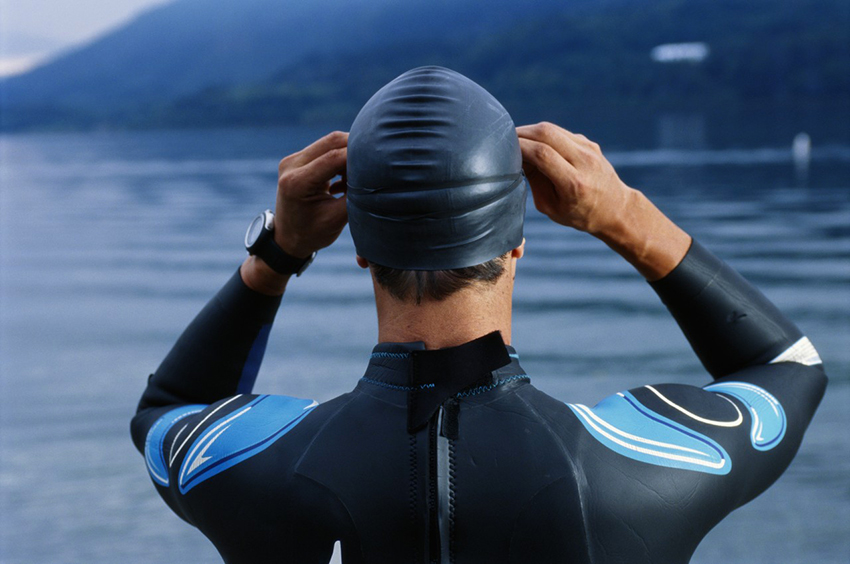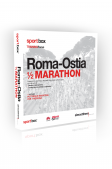
![]()
Three types of sport, three times the training?
Apparently not, but you will need to be organised and disciplined in your approach.
The triathlon has never been more popular, starting as “les trois sports” in France in the 1920’s it slowly evolved until the first edition of the famous Haiwaii Ironman Triathlon in 1978 (where just 15 athletes started and 12 finished).
The event has continued to grow in size and popularity and now attracts thousands of athletes to participate in races of all distances, local and international, every year.
With the choice of distance (from Sprint through to full Ironman) and the ever-growing number of races in the calendar, triathlon has arguably become a discipline that is within reach of everyone with the commitment and dedication to prepare for it.
But that’s just it.
![]()
Doesn’t triathlon training mean triple training?
The simple answer is no. It is possible to prepare for a triathlon training five times a week – or more or less the typical time commitment required to prepare for a marathon.
We all have time constraints, and there is no need to train like the Brownlee brothers or Andy Potts prior to a triathlon in the same way as most of us wouldn’t expect to train like Geoffrey Mutai or Haile Gebrselassie in the run up to a marathon.
Six times Ironman and triathlon coach Andrea Re of Multisport3ining explained more about the time, approach, dedication and commitment required to complete a triathlon, be it Olympic, Sprint, 70.3 or the full Ironman distance.
![]()
Swim, bike or run? Identify your strengths & weaknesses
The first key step is to understand your relative strengths and weaknesses. For example, a strong marathon runner who can’t swim will require a completely different training focus to a swimmer cyclist who wants to introduce running into their training program for the first time.
These relative strengths and weaknesses can be identified to some extent from an athlete’s training and sport history, but a good coach will carry out a series of functional tests in each of the sports before preparing a triathlon training program.
A personalised program will then seek to address the strengths and weaknesses in each sport, and may focus more initially – but not exclusively – on the weaker sport.
![]()
Triple training?
Then comes the question of the number, frequency and duration of training sessions. Andrea Re maintains that an amateur triathlete can prepare for a race with five carefully planned training sessions a week.
A standard program (for an athlete who has already achieved a base level of training in all three sports) may typically include three sessions Monday-Friday, comprised of swimming or running (or a combination of the two), leaving a further combo and longer bike session for the weekends when most people have more free time and, just as importantly, it is light outside.
![]()
Combo Training?
Combo training sessions – where you work on two disciplines in a single session – can be an efficient use of the time available for training and are also an important aspect of race preparation. The shorter the race distance, the more important it becomes to do regular combo sessions (in a longer race the transition period has a smaller impact on the overall time.)
Whilst in an ideal world the combo (or brick) sessions would be swim then bike, or bike then run, as in the race itself, the former can be difficult to organise, particularly in winter. In this case the bike session can be replaced with a run – even just a few kilometres – to get used to making the transition from being horizontal in the water to being vertical and to adapt to the common sensation of wobbly or heavy legs after being in the water.
Tip: Experienced triathletes use their arms to swim, saving their legs for the bike and run sections of the race, but you’ll often see them kicking hard in the last few metres of the swim to get the blood circulating.
![]()
How far?!
Another issue to take into consideration is the length of the target race. Whilst perhaps most famous race is the Ironman – 3.8km (2.4m) swim, 180km (112m) bike and 42.2km (26.2m) run, there are a wide range of triathlon distances, starting from the Sprint through to Olympic, ITU (International Triathlon Union) Long, Half (or Ironman 70.3) through to the full Ironman distance.
Clearly, the shorter the target race, the less time you need to spend clocking up kilometres on your bike on a Sunday morning.
![]()
More training, more injuries?
Aside from being more balanced, multisport training has an additional benefit. When injuries do occur, it is often possible to stop training in the discipline affected by the injury and switch the focus to the other two sports. This can be a benefit both physically – maintaining fitness levels – and psychologically – avoiding the depression or bad habits that affect many single sport athletes when they are forced to stop training for a prolonged period.
These two positives mean that multi-sport athletes are often more likely to wait for injuries to heal completely whilst many single sport athletes can be tempted go back to training too quickly.
Summary
- Triathlon training does not mean triple training
- Five sessions a week can be adequate preparation, even for the 70.3 or Ironman distances
- Combo sessions are important
- Organisation and targeted, objective-led training is key.



 Subscribe to our newsletter to have the latest updates delivered straight to your inbox.
Subscribe to our newsletter to have the latest updates delivered straight to your inbox. TRI60 DISTANCE TRAINING
TRI60 DISTANCE TRAINING  Sportbox Training Focus Roma-Ostia Half Marathon 2019
Sportbox Training Focus Roma-Ostia Half Marathon 2019  Sportbox Training Focus Venice Marathon 2019
Sportbox Training Focus Venice Marathon 2019  t-shirt limited edition autographed by Danilo Goffi
t-shirt limited edition autographed by Danilo Goffi  Women's Sitting technical t-shirt
Women's Sitting technical t-shirt  Women's dove voglio technical t-shirt
Women's dove voglio technical t-shirt 